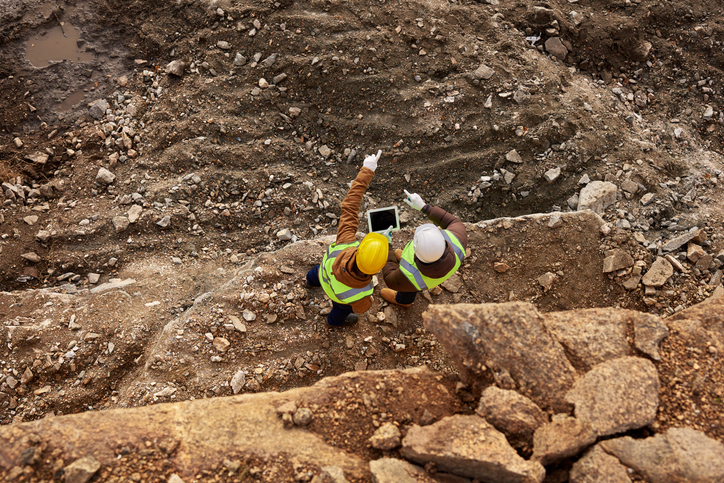Australian Mining Jobs Changing Due to Technology
Mining Jobs In Australia Are Changing! Technology is playing a major role. Exciting new technology is changing the Australian mining industry, making it more efficient and productive.

Technology is revolutionalising the Australian mining industry. A report commissioned by the Minerals Council of Australia (MCA) found that over the next 5 years more than 77 percent of the country’s mining jobs will be affected by technological innovations. Productivity is looking to increase 23 percent.
MCA CEO Tania Constable stated that Australia’s education and training system require the largest transformation. A modernised structure will offer “enhanced movement between universities and vocational education sectors,” combining traditional mining skills with “the latest scientific, technical and trade skills” including data analytics, change management and computing. Future educational degrees will focus more on creativity, collaboration and social sciences to respond to changing expectations which will offer students higher education certifications and fit-for-purpose degrees.
Exploration Opens Up Due to New Technology
Exploration design is currently hindered by the fact that it is based retrospective and static methods without much adjustment made during drilling. But new technology such as 3D mapping, geo-spatial data, and hyperspectal core imaging allows raw materials getting drilled to be monitored constantly. New high-tech tools such as autonomous drills allow for new exploration methods to adapt as they respond to data collected. Some mining organisations already use this new technology such as Rio Tinto using the 3D mapping technology, and BHP using the downhole assay.
Drones and Digital Twins Streamline Ops
Poorly run processing plants can become large drawbacks in modern mining operations. Some obstacles facing this type of streamlined system include breakdowns, poor scheduling, and depleting higher-grade ore deposits. Integrating tools including drones, digital twins, and ore-sorting technologies help to improve product quality and processing efficiency. Ore-sorting technology works to separate valuable materials from waste, reducing the amount of material requiring processing. An Integrated Operating Centre (IOC) provides the means to better manage the feed presentation, shift maintenance strategies from reactive to predictive, and optimise plant operations.
Trading with End-to-End Transparency
Consumers are more aware of many of the ethical issues facing mineral supply chains which is increasing demand for transparency in the processing and sourcing of materials. New blockchain tech offers an efficient means of tracing metals from extraction to processing with full transparency for everyone. One company, DeBeers, has developed a blockchain called Tracr, that tracks the progress of the diamonds and creates a digital trail for each physical diamond. This program helps establish trust in a wholly new way to the industry, which demonstrates how tech can overcome the challenges of compliance and authenticity.
The Tracr team says the technology “ensures immutable end-to-end traceability,” while allowing users to maintain full control of their own data.”Blockchain allows the automatic detection of fraud, reducing instances of round-tripping and double-financing. The increased visibility and trust will facilitate access to financing and potentially improved interest rates, while a decreased reliance on email and paperwork will cut operating costs and improve efficiency.”
Right now, Tracr is a B2B platform, but B2C applications are soon to be developed in response to consumer requirements.
Using Autonomy to Reduce Stoppages
Transport systems are susceptible to human error or delays, and vehicles breakdown causing costly problems with downstream operations. However, tech can help with this problem, too. Broken rail detection and digital twins direct predictive maintenance to help catch problems before they cause significant issues down the line. Autonomous vehicles give operators the liberty of off-site work, removing the need for operator-induced stoppages. Rio Tinto started using autonomous trains in 2017, subsequently reporting improvements in safety as well as a reduction of bottlenecks and cycle time. Introducing this tech can lead to improvements of 20 percent in asset-operating time, and between 3 percent and 15 percent improvements in productivity.
Optimal Planning with Artificial Intelligence
Optimisation of planning and scheduling can be achieved through IOCs and digital twins, allowing various schedules to be made with workers selecting the best planning route for increasing productivity. Australia BHP uses artificial intelligence (AI) to schedule track movements and the dispatch of trains which carry iron ore between their mines and Port Hedland. Until now, this technology has helped BHP to manage stockpiles and ensure deliveries are correct and timely.
Avoiding Danger with Electric Mines
New tech has already brought significant progress to mining safety. Underground mines can be hazardous due to falling rock, poor ventilation, and possible exposure to heat and gas. New electric vehicles have brought improvements to workers’ safety because they are no longer exposed to carcinogenic Diesel Particulate Matter (from gas-run vehicles). A Canadian organisation, Goldcorp, is now working on constructing an electric mine with battery-operated drills, electric bottlers, and electric haul trucks. The company estimates that the operation will save them two million litres of diesel per year while also reducing greenhouse gases by 70 percent.



